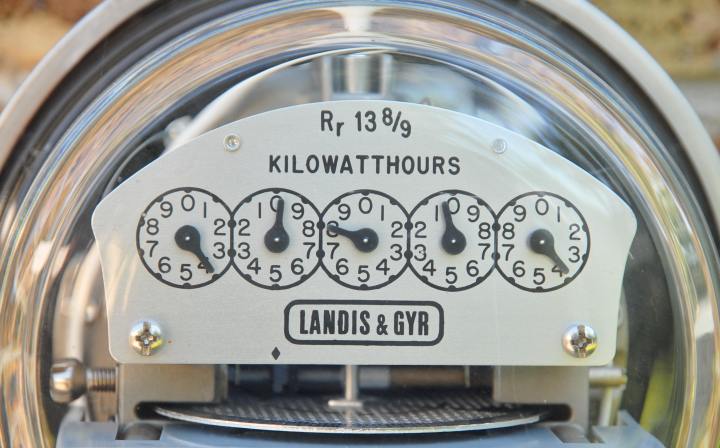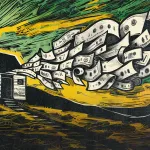LIVE SMARTER
Pay less for electricity by getting your head around Eskom’s sometimes confusing block tariffs

The amount of electricity you use each month has a significant impact on how much you will pay per unit. Unmonitored, your bill could cost thousands more than necessary.
When the National Energy Regulator of South Africa (Nersa) introduced Incline Block Tariffs (IBT) back in 2010, the aim was to protect lower-usage residential customers against the high price increases, as well as to encourage heavy users to reduce their electricity usage.
However, the system has proven to be confusing for consumers, with many still unsure as to why the cost of electricity seems to change in price at different times of the month. This is especially the case among prepaid customers, who notice that as they top up towards the end of the month, they receive fewer units for their money.
Incline Block Tariffs
The exact price a consumer in a residential area pays for a unit of electricity differs according to a number of factors, including the area, municipality, the price of the house, the electricity supplier and the current. However, according to the Incline Block Tariffs guideline, charges for residential electricity supply are generally split across similar usage-defined blocks.
For example, the lowest Eskom-approved rate from 1 April 2021 to 31 March 2022, was R1.61 per kilowatt-hour (kWh). A kWh is the same as one unit when buying prepaid electricity. That R1.61 rate would cover usage up to 350 units per month, and would apply specifically to prepaid consumers on a 20-amp current, which Eskom typically provides for in informal settlements and rural areas that do not need a lot of power.
However, once they buy more than 35o units of electricity a month, the price will jump to R1.82 per unit for the rest of the month, resetting to the lower rate at the beginning of the following month.
For customers on 60-amp current, which is the equivalent of a suburban home, the lowest-rated payment block for that period would be from zero to 600 units at R1.82 per unit. Once 600 units is up, the rate increases to R3.10 per unit for the rest of the month, resetting to the lower rate at the beginning of the following month.
On prepaid, never buy more than you’ll need in a single month
It’s a bit trickier for post-paid customers to gauge the amount of electricity consumed during the month, unless they pay careful attention to the meter. That said, practising good energy efficiency habits such as using LED lights and keeping the lights off when not needed, managing the geyser, as well as using alternative forms of heating rather than electric heaters, can help households manage their electricity usage.
It’s also important for consumers to check their electricity bill to see if they are using more than 600 kWh a month. This is obviously simpler to manage on a prepaid account, where consumers can keep track of usage and how much they’re spending.
Importantly, prepaid customers should always avoid buying in bulk, or more than they need for the month. For example, if a suburban consumer uses on average about 500 units a month and they decide to buy two months’ worth of electricity in one go – that’s 1,000 units, and they would have been charged the higher rate for the 400 units above the initial 600. This is an extra R1.28 per unit based on the above mentioned rates, unnecessarily adding an extra R512 to the cost of their electricity across the two months.
It’s not the same for the whole country
As mentioned, different parts of the country and suppliers charge different rates for electricity, so it is important to pay careful attention to how much electricity costs per unit for your particular address.
For example, according to the City of Cape Town website, the city has a three-tiered tariff structure. The lowest tier is known as the Lifeline tariff for “prepaid customers with limited means”, whose property is valued below R400,000, and whose consumption does not exceed 450 kWh a month.
In accordance with the City’s 2022 to 2023 tariffs, these customers get up to 25 or 60 units free, depending on average consumption. Above that, up to 350 units a month, they pay R1,80 per unit, inclusive of VAT; and from 350 to 450 units, the pay R3.63 per unit.
Should they use more that 450 units a month, they would move to the next tier – the Domestic tariff. They would pay R2.98 per unit for the first 600 units, and R3.63 for additional units. They must be on prepaid and their municipal property evaluation must be between R400,000 and R1-million.
For those who don’t qualify for either of those tiers, there’s the Home User tariff for properties valued above R1-million who might also be on post-paid rather than prepaid electricity. They pay a rate of R2.63 for the first 600 units, and R3.63 for further units. They also pay an additional service charge of R212.75.
Comparatively, the City of Johannesburg offers a different tiered system and rates for their prepaid and post-paid customers. Prepaid customers are split into three blocks – the first is limited to 35o kWh, the second up to 500 kWh and everyone above that falls into the third block. The VAT-inclusive rates also differ per block, at R2.01, R2.40 and R2.73 respectively.
Meanwhile, the City’s post-paid customers are split into five blocks – the first going up to 500 kWh, the second up to 1,000, the third up to 2,000, the fourth up to 3,000 and anything above that falls into the fifth block. Tariffs range from R2.01 at the bottom block, to R2.76 per unit for heavy residential users consuming above 3,000 kWh a month.
Similar variations apply across the country.
On closer inspection of his bill, this writer – a post-paid resident of the Raymond Mhlaba municipality in the Eastern Cape – discovered that he was paying R2.10 per kWh for the first 600, and R3.39 for any usage above that. A bit more than Johannesburg, but thankfully less than Cape Town. DM/ML/OBP
In case you missed it, also read Load shedding 101 – what to consider when buying LED emergency bulbs for your home
Load shedding 101 – what to consider when buying LED emergency bulbs for your home
Visit Daily Maverick’s home page for more news, analysis and investigations


















Thank you. I hope for the next 100 days you have 1 article per day on saving and managing electricity bill per day.
We can’t wait for the politicians we need to take action ourselves.
There is a problem. Eskom has too many employers and someone has to pay their salaries. If we individually save money on electricity across the population, this will decrease Eskom revenue and they will have to increase rates. We ultimately pay for their inefficiency and also for those who simply don’t pay for the electricity they use.
The City of Cape Town says it supports small businesses, but that’s not what it does. It charges more for electricity and water supplied to business premises than it does at residential ones. Unless , that is, you are on prepaid, when it’s more reasonable. In their defence, they will install a prepaid meter free.
SA really needs a smaller number of simplified and justifiable tariffs! The whole game is changing and soon everybody will pay an amount to have power available plus a fee for consumption and eventually we will pay different energy rates different times of the day. Solar is part of the reason, another is that Eskom is being split into Generation, Transmission and Distribution. If you can, the ideal is (1) fix your efficiencies with solar geyser and LED and habit changes (2) install solar but with a battery backup to deal with loadshredding and also allow you to self-consume as much of your solar as possible and (3) when those are done, downgrade your connection to the smallest size you can because that availability fee will be priced to the size of your connection. Bottom line is 20% of consumers don’t pay so Eskom and councils will come looking for revenue and extra margin…
Thanks. Important information but still quite confusing for the ordinary householder. I would like to understand exactly what is charged and what is the most efficient and economic way to keep phones, laptops, UP units, LED lights used during load-shedding being recharged etc. For example: If a laptop is fully charged and still connected does it still consume electricity?
There is a possible exception to the “On prepaid, never buy more than you’ll need in a single month” rule. If you know you are in the higher paying tariff, and the 19% increase is about to go through – surely you will save the difference?